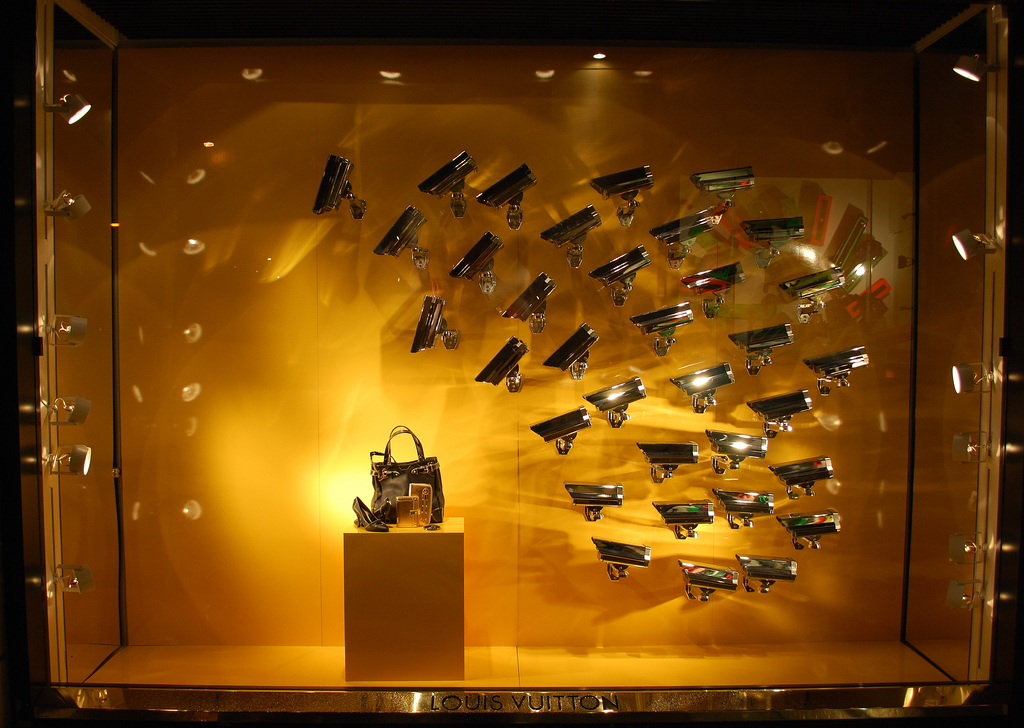
The state of surveillance as we have been constantly reassured is set up to protect citizens from rogue elements like terrorists and ordinary folks like us have nothing to fear. Yet the state of these security cameras in a similar Louis Vuitton shop display a few weeks ago in Singapore seems to suggests otherwise.
Instead of deflecting attention, the security cameras were shiny, calling attention to its presence and even hinting to its desirability with a sleek form. More importantly, all of them were distracted, fixated on the direction of the LV product, as if it was the only thing worth looking out for. Could it be that the surveillance state was only looking out for those who could afford it?
Just outside these displays, throngs of consumers were deep in the trance of the consumption ritual, and one saw a reflection of the state of things in this shopping space. The consumers, like mono-eyed cameras, were fixated on this high-end product, unable to see anything more than that. It seems if you were without an LV item, you were condemned to looking but never to be looked at.